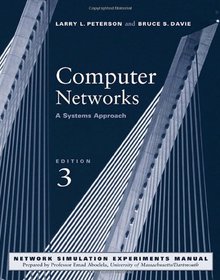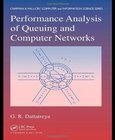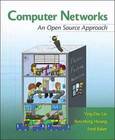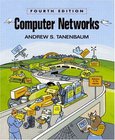Computer Networks
A Systems Approach
3rd Edition

Book Details:
| Publisher: | Morgan Kaufmann |
| Series: | Morgan Kaufmann |
| Author: | Bruce S. Davie |
| Edition: | 3 |
| ISBN-10: | 155860832X |
| ISBN-13: | 9781558608320 |
| Pages: | 813 |
| Published: | May 22 2003 |
| Posted: | Nov 19 2014 |
| Language: | English |
| Book format: | |
| Book size: | 4.73 MB |
Book Description:
In this new edition of their classic and bestselling textbook, authors Larry Peterson and Bruce Davie continue to emphasize why networks work the way they do. Their "system approach" treats the network as a system composed of interrelated building blocks (as opposed to strict layers), giving students and professionals the best possible conceptual foundation on which to understand current networking technologies, as well as the new ones that will quickly take their place.Incorporating instructor and user feedback, this edition has also been fully updated and includes all-new material on MPLS and switching, wireless and mobile technology, peer-to-peer networks, Ipv6, overlay and content distribution networks, and more. As in the past, all instruction is rigorously framed by problem statements and supported by specific protocol references, C-code examples, and thought-provoking end-of-chapter exercises.New to the edition is a downloadable network stimulation lab manual that allows students to visualize and experiment with core networking technologies in direct coordination with the book's discussion. Thanks to this and many other enhancements, Computer Networks: A Systems Approach remains an essential resource for a successful classroom experience and a rewarding career in networking. * Written by an author team with over thirty years of first-hand experience in networking research, development, and teaching--two leaders in the work of defining and implementing many of the protocols discussed in the book.* Includes all-new coverage and updated material on MPLS and switching, wireless and mobile technology, peer-to-peer networks, Ipv6, overlay and content distribution networks, VPNs, IP-Telephony, network security, and multimedia communications (SIP, SDP).* Additional and earlier focus on applications in this edition makes core protocols more accessible and more meaningful to readers already familiar with networked applications.* Features chapter-framing statements, over 400 end-of-chapter exercises, example exercises(with solutions), shaded sidebars covering advanced topics, web resources and other proven pedagogical features.* Through a companion Web site (see button on this website), provides many additional resources, including a downloadable network simulation lab manual tightly integrated with the topics in the book.
Download Link:
Related Books:
Performance Analysis of Queuing and Computer Networks
Performance Analysis of Queuing and Computer Networks develops simple models and analytical methods from first principles to evaluate performance metrics of various configurations of computer systems and networks. It presents many concepts and results of probability theory and stochastic processes. After an introduction to queues in computer networks, this self-contained book covers important random variables, such as Pareto and Poisson, that constitute models for arrival and service disciplines. It then deals with the equilibrium M/M/1/queue, which is the simplest queue that is amenable for analysis. Subsequent chapters explore applications of continuous time, state-dependent single Markovian queues, the M/G/1 system, and discrete time queues in com...
Computer Networks
An Open Source Approach
Ying-Dar Lin, Ren-Hung Hwang, and Fred Baker's Computer Networks: An Open Source Approach is the first text to implement an open source approach, discussing the network layers, their applications, and the implementation issues. The book features 56 open-source code examples to narrow the gap between domain knowledge and hands-on skills. Students learn by doing and are aided by the book's extensive pedagogy. Lin/Hwang/Baker is designed for the first course in computer networks for computer science undergraduates or first year graduate students....
Computer Networks
4th Edition
Computer Networks, Fourth Edition is the ideal introduction to computer networks. Renowned author, educator, and researcher Andrew S. Tanenbaum has updated his classic best seller to reflect the newest technologies, including 802.11, broadband wireless, ADSL, Bluetooth, gigabit Ethernet, the Web, the wireless Web, streaming audio, IPsec, AES, quantum cryptography, and more. Using real-world examples, Tanenbaum explains how networks work on the inside, from underlying physical layer hardware up through today's most popular network applications....
2007 - 2021 © eBooks-IT.org



